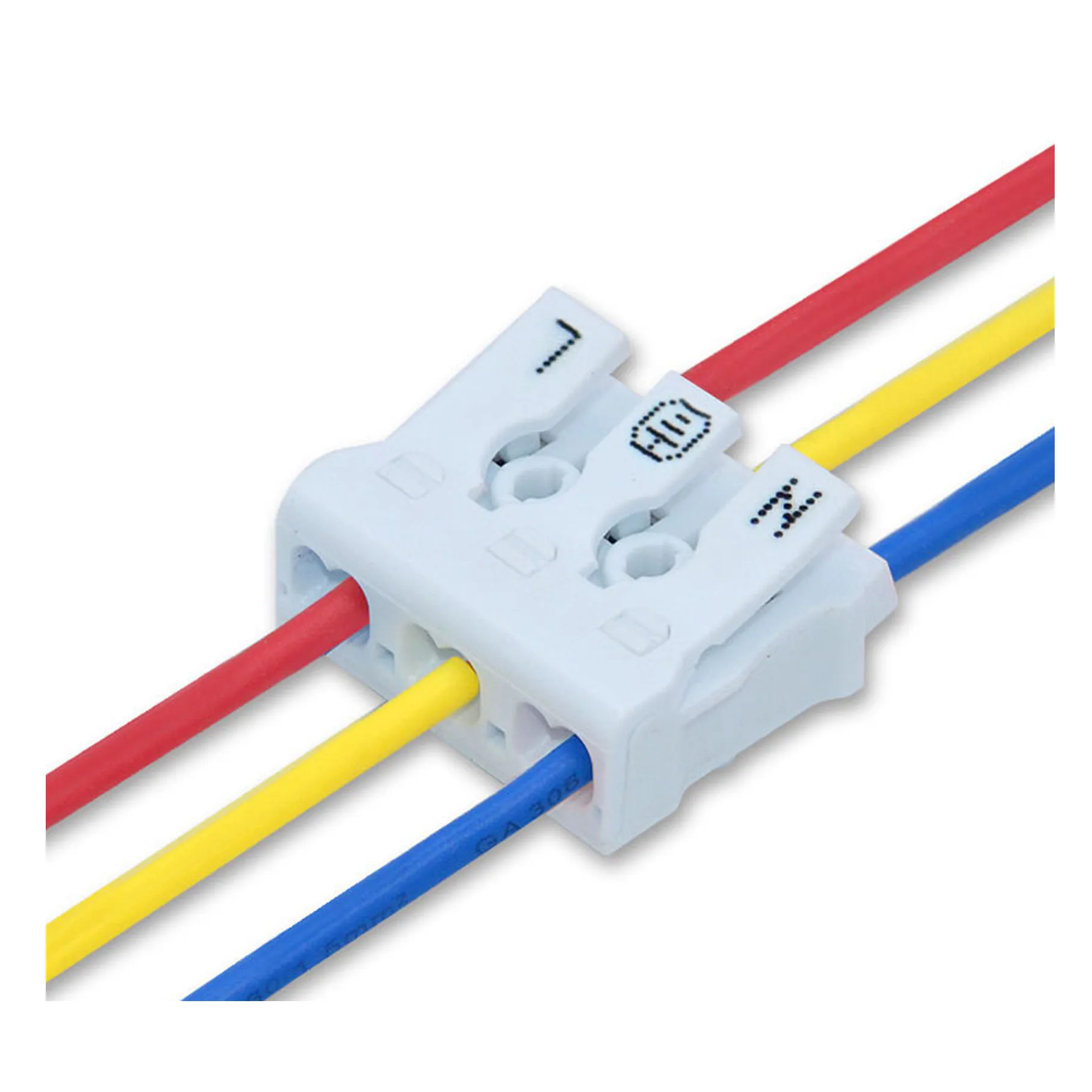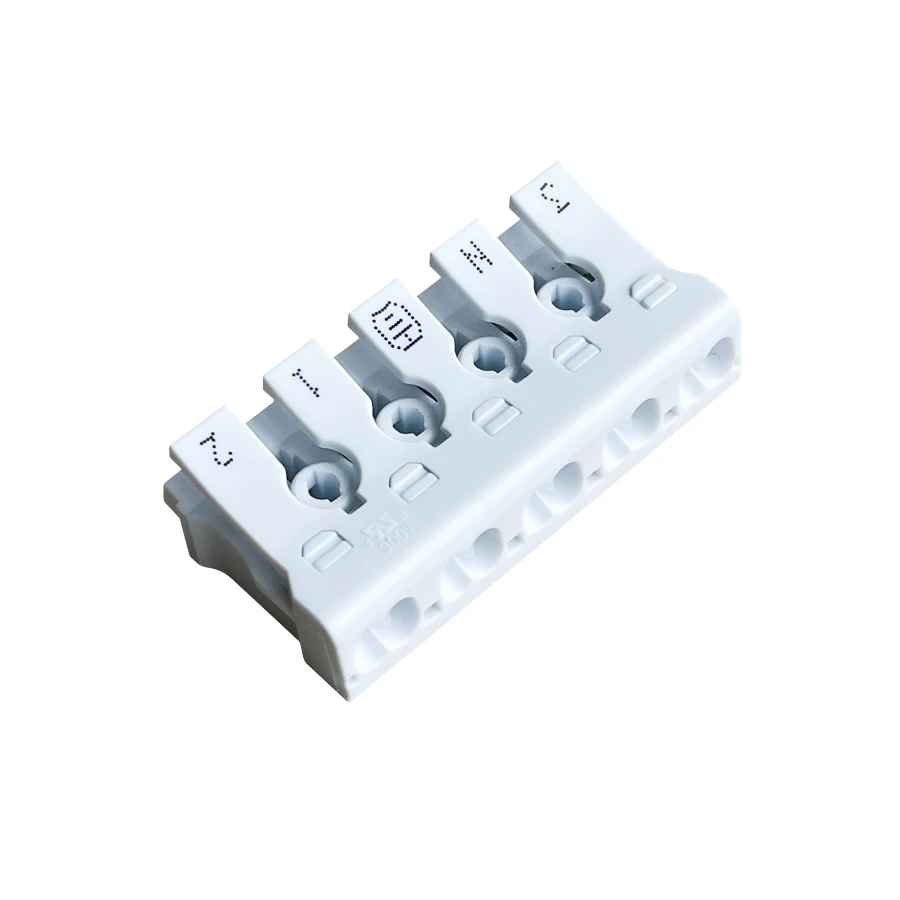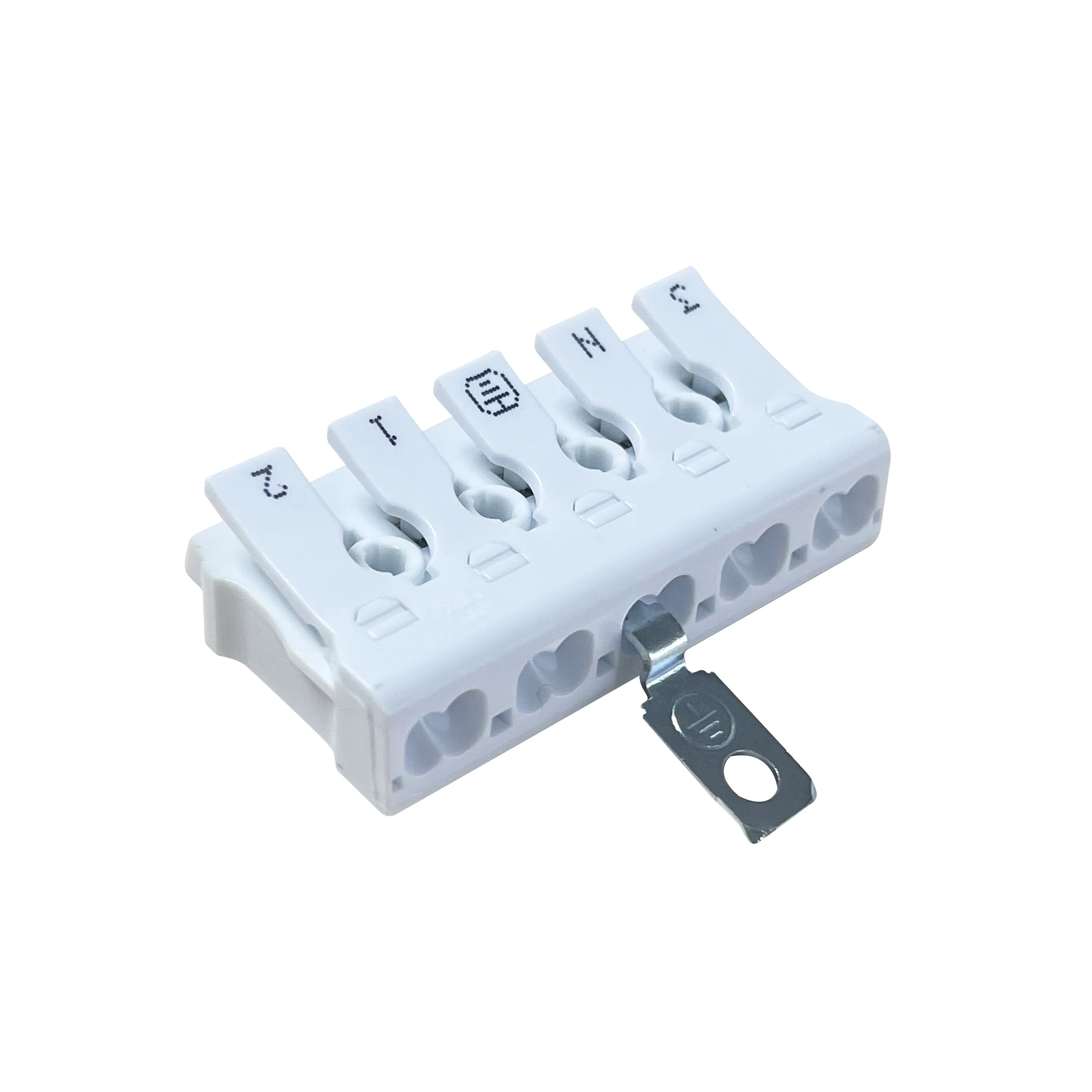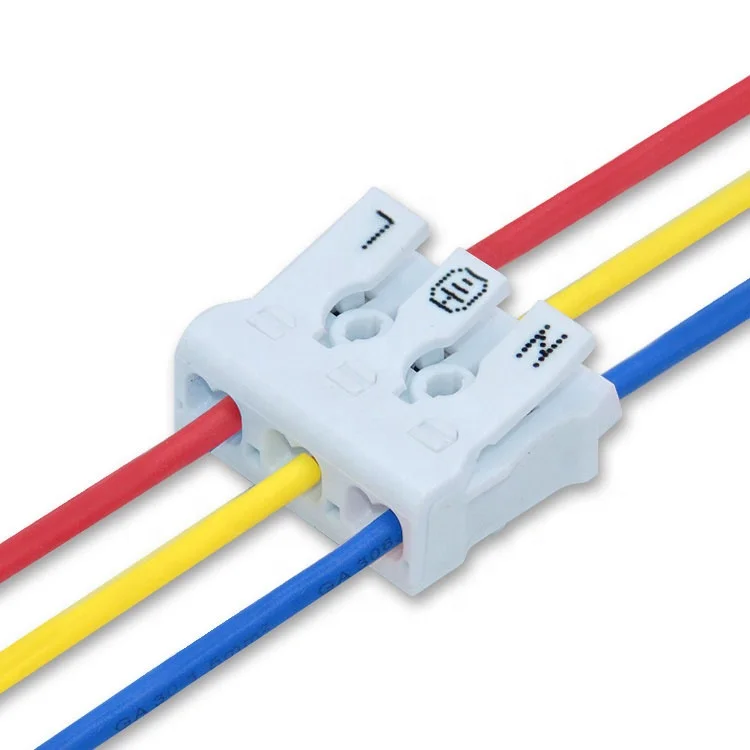Поле обязательно.
The Ultimate Guide To Push Wire Connectors Selection Installation Troubleshooting And Maintenance
2025-06-03
The electrical connection landscape can be intimidating; a multitude of components and technologies. However, for simple, more reliable, and oftentimes faster, connections; push wire connectors are a game-changer. An easy way to replace the use of wire nuts or soldering, enabling the electrical world to be a little more DIY for everyone. In this ultimate guide, we will cover everything you need to know to harness the power of push wire connectors safely and effectively: selection, installation, troubleshooting, and maintenance. Regardless of if you are an accomplished electrician or simply a novice at your first-home wire project, knowing those connectors is essential to a durable as well as secure electrical connection. This complete guide will help you learn everything you should know to handle push wire connectors with confidence and get your electrical projects done perfectly. Push Wire Connectors: What Is It, Different Types and Uses
Push Wire Connectors — also known as push-in connectors, spring connectors, or quick connectors — are designed for fast and secure wire joining. This type of connector is ideal as they do not require a specific locking tool such as wire strippers and crimping tools for their connection process. Typically, these connectors contain a housing with small internal spring-loaded clamps that hold on to the wire as you insert it. Different kinds are available for unique applications based on the amperage rating, wire gauge, and the number of wires they can accommodate. Selecting proper connector is vital for safety and end results. There are many types of connectors such as single-wire connectors, multi-wire connectors that connect multiple wires at the same time, and those that are specific to a particular type of wire such as solid core or stranded wire.
Push wire connectors have a lot of applications. Low voltage light bulb: Chestnut light bulb are widely use in low voltage shows, externally lights and electric devices like televisions etc. Nonetheless, these types are gaining traction in high-voltage applications, as long as you adhere to the proper amps and voltage ratings. Because of how easy they are to use, they are great for those applications that need frequent plug and unplug like in prototyping and testing circuits. Additionally, their fast and convenient nature lend themselves to the mass production environment. That said, you should always confirm that the connector is rated suitably for the voltage and current the circuit will see.
How to Choose (Push Wire Connectors)
For making a safe and effective connection you need to select the right push wire connector. When choosing a wire loom, the more important considerations include the wire gauge, how many wires you will be connecting, and the amperage rating. Wire gauge is the thickness of the wire, and it is an important subject in choosing the right connector with it, which requires finding a suitable connector that fits the wire gauge for getting a good grip, otherwise if the wire-to-connector connection is loose, it can generate a lot of heat, and then cause a fire [13] [16].
Ramification 8: The connector amperage rating must be large enough to supply at least the current which flows through the connected wires. Selecting an under-rated connector will get hot and is a serious fire hazard. In addition, be mindful of the kind of wire that you are using (solid core or stranded) as certain connectors are designed for one type or the other. Always check the manufacturer's details for compatibility before choosing your connector for your application.
Installing guide (stepwise integrations)
Push wire connectors are easy to install. Start off by using a wire stripper to cut the PVC insulation off the ends of the wires, taking care to make a clean cut so that the individual wire strands aren't damaged. The amount of sheath stripped should match what the manufacturer calls for. Firmly press the open end of the stripped wire into the connector until you hear a loud click corresponding to the fact that the internal clamps have grabbed the wire.
Make sure each wire is inserted all the way in and locked in place by the connector. If the wire does not go easily through, do not force it! That can be a sign the connector is incompatible with the wire gauge. For multi-wire connectors, make sure each wire is inserted properly and tightly. Once you have finished the installation, test the wires by pulling gently on it to see if they hold. Even if the wires seem kind of loose, a correctly installed connector will not allow the wires to just pull out. There are some slight differences in procedure depending on the style of connector and the brand, so always adhere to the instructions provided by the manufacturer at the time of installation.
Finding Solutions to Common Issues
Although they are simple, problems can arise. A typical culprit is a loose connection, resulting from wires that have not been stripped sufficiently or from wires that are not compatible in terms of gauge. If you notice a loose fit or a connector that does not "click" in place, you'll have to gently remove the wires and re-insert them so they go in as deep as they are supposed to go. Inspect the connector itself for any sign of damage; if it is damaged at all, replace it immediately.
Another issue comes from overheating which can be caused by using a connector that is not rated well enough. If one of the connectors is just a little too warm when you reach to it, shut down the power, and take out the connector with a higher amp rating. Never try to use a broken connector, the latter is a big fire danger. Periodic check of connections helps to avoid these type of issues.
Maintenance and Safety Measures
In order to have push wire connectors to be safe and not to lose their integrity, regular inspection is were important. Keep an eye out for overheating, loose connections or physical damage by checking the connectors from time to time. Address any problems that are discovered without delay, as they may be dangerous. When operating in a damp or humid environment, use water-resistant connectors to prevent the contacts from rusting, ensuring a robust connection.
Safety should always come first when working with electricity. As a golden rule, always power down before handling any electrical links. If in doubt about any part of the installation or troubleshooting, contact a qualified electrician. If you follow these guidelines, use the right safety measures, and install push wire connectors properly, you can have an easy to use solution that is safe and reliable.
Push Wire Connectors — also known as push-in connectors, spring connectors, or quick connectors — are designed for fast and secure wire joining. This type of connector is ideal as they do not require a specific locking tool such as wire strippers and crimping tools for their connection process. Typically, these connectors contain a housing with small internal spring-loaded clamps that hold on to the wire as you insert it. Different kinds are available for unique applications based on the amperage rating, wire gauge, and the number of wires they can accommodate. Selecting proper connector is vital for safety and end results. There are many types of connectors such as single-wire connectors, multi-wire connectors that connect multiple wires at the same time, and those that are specific to a particular type of wire such as solid core or stranded wire.
Push wire connectors have a lot of applications. Low voltage light bulb: Chestnut light bulb are widely use in low voltage shows, externally lights and electric devices like televisions etc. Nonetheless, these types are gaining traction in high-voltage applications, as long as you adhere to the proper amps and voltage ratings. Because of how easy they are to use, they are great for those applications that need frequent plug and unplug like in prototyping and testing circuits. Additionally, their fast and convenient nature lend themselves to the mass production environment. That said, you should always confirm that the connector is rated suitably for the voltage and current the circuit will see.
How to Choose (Push Wire Connectors)
For making a safe and effective connection you need to select the right push wire connector. When choosing a wire loom, the more important considerations include the wire gauge, how many wires you will be connecting, and the amperage rating. Wire gauge is the thickness of the wire, and it is an important subject in choosing the right connector with it, which requires finding a suitable connector that fits the wire gauge for getting a good grip, otherwise if the wire-to-connector connection is loose, it can generate a lot of heat, and then cause a fire [13] [16].
Ramification 8: The connector amperage rating must be large enough to supply at least the current which flows through the connected wires. Selecting an under-rated connector will get hot and is a serious fire hazard. In addition, be mindful of the kind of wire that you are using (solid core or stranded) as certain connectors are designed for one type or the other. Always check the manufacturer's details for compatibility before choosing your connector for your application.
Installing guide (stepwise integrations)
Push wire connectors are easy to install. Start off by using a wire stripper to cut the PVC insulation off the ends of the wires, taking care to make a clean cut so that the individual wire strands aren't damaged. The amount of sheath stripped should match what the manufacturer calls for. Firmly press the open end of the stripped wire into the connector until you hear a loud click corresponding to the fact that the internal clamps have grabbed the wire.
Make sure each wire is inserted all the way in and locked in place by the connector. If the wire does not go easily through, do not force it! That can be a sign the connector is incompatible with the wire gauge. For multi-wire connectors, make sure each wire is inserted properly and tightly. Once you have finished the installation, test the wires by pulling gently on it to see if they hold. Even if the wires seem kind of loose, a correctly installed connector will not allow the wires to just pull out. There are some slight differences in procedure depending on the style of connector and the brand, so always adhere to the instructions provided by the manufacturer at the time of installation.
Finding Solutions to Common Issues
Although they are simple, problems can arise. A typical culprit is a loose connection, resulting from wires that have not been stripped sufficiently or from wires that are not compatible in terms of gauge. If you notice a loose fit or a connector that does not "click" in place, you'll have to gently remove the wires and re-insert them so they go in as deep as they are supposed to go. Inspect the connector itself for any sign of damage; if it is damaged at all, replace it immediately.
Another issue comes from overheating which can be caused by using a connector that is not rated well enough. If one of the connectors is just a little too warm when you reach to it, shut down the power, and take out the connector with a higher amp rating. Never try to use a broken connector, the latter is a big fire danger. Periodic check of connections helps to avoid these type of issues.
Maintenance and Safety Measures
In order to have push wire connectors to be safe and not to lose their integrity, regular inspection is were important. Keep an eye out for overheating, loose connections or physical damage by checking the connectors from time to time. Address any problems that are discovered without delay, as they may be dangerous. When operating in a damp or humid environment, use water-resistant connectors to prevent the contacts from rusting, ensuring a robust connection.
Safety should always come first when working with electricity. As a golden rule, always power down before handling any electrical links. If in doubt about any part of the installation or troubleshooting, contact a qualified electrician. If you follow these guidelines, use the right safety measures, and install push wire connectors properly, you can have an easy to use solution that is safe and reliable.
Подписаться
Запрос





